|
Home →
Algonquin Winter Tracking
Algonquin Winter Tracking Expedition 2005
|
Sunday (Day 1)
|
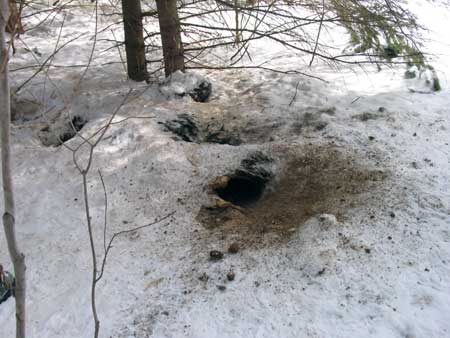 |
The week of tracking started
at noon on Sunday. We met at the wildlife research station
in Algonquin Park. We headed out almost right away to
investigate the tracks surrounding a dead moose that was
about 50 feet off the
side of Hwy 60 (which runs through Algonquin Park). The
moose was mostly buried in snow and ice. It had evidently
been struck by a vehicle and had crawled under a tree to
die. Dead animals are magnets for all sorts of animals who
come to feed off the carcass. |
|
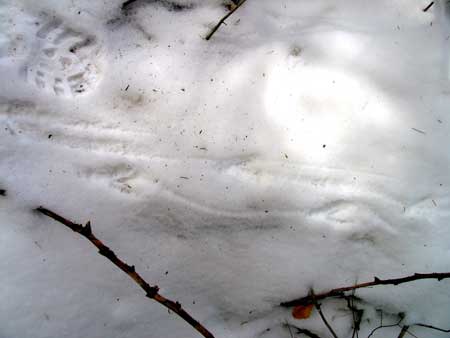 |
Ravens, being scavengers, are
also attracted to dead animals.
Here's a set of raven tracks (walking towards the right
side of the photo). |
|
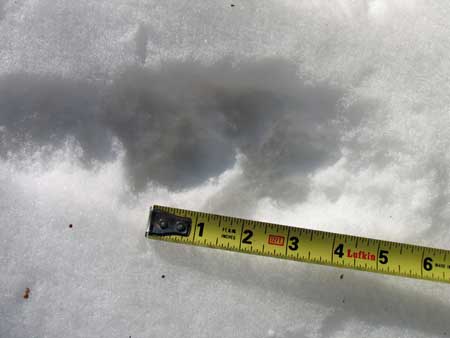 |
The wolves that live in
Algonquin Park are also drawn to animal carcasses. Here's
one wolf track that was right nearby the dead moose.
The tape measure beside the track gives a sense of the
size of the print.
Those familiar with tracking know that track measurements
are one way to help identify the animal that made a
particular track. |
|
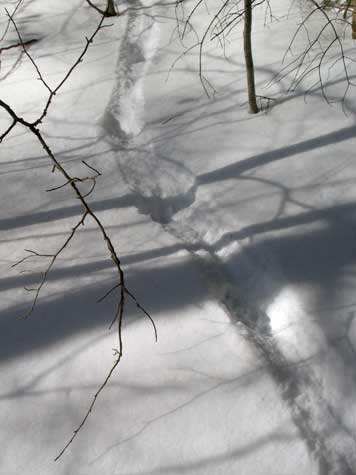 |
A wolf's trail as it leads
away from the carcass. If you look closely you can see a
clear paw print in the trail. |
|
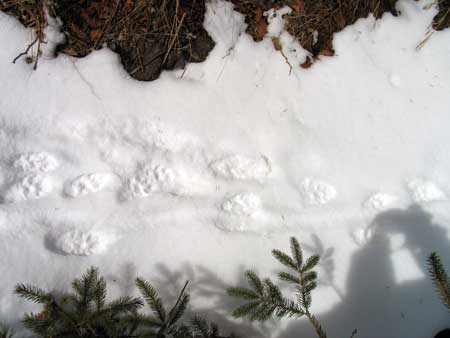 |
Fishers also visit animal kill
sites. Here's a nice set of fisher tracks. |
|
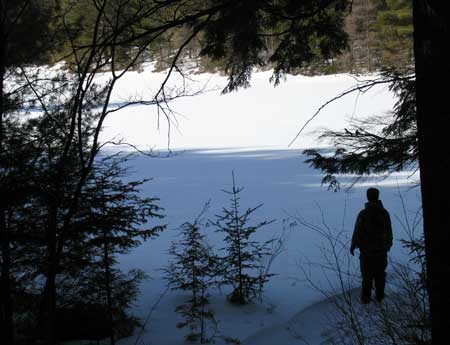 |
Peck Lake, just in from the
highway, and very near where the dead moose lay. A
beautiful sunny calm afternoon! |
|
|
|
|
We also found a wolf lay near the dead moose. This is a place where a
wolf had laid on the ground for a period of time. The wolf in this case
lay looking back toward the highway, as this was the most likely
direction from which danger (humans) might come. Later we visited the
Algonquin Park visitor centre to get an overall review of the Park's
history and ecology, and to browse their excellent bookstore (I'm a
sucker for nature books!). |
| |
|
Previous
Next |
|
|